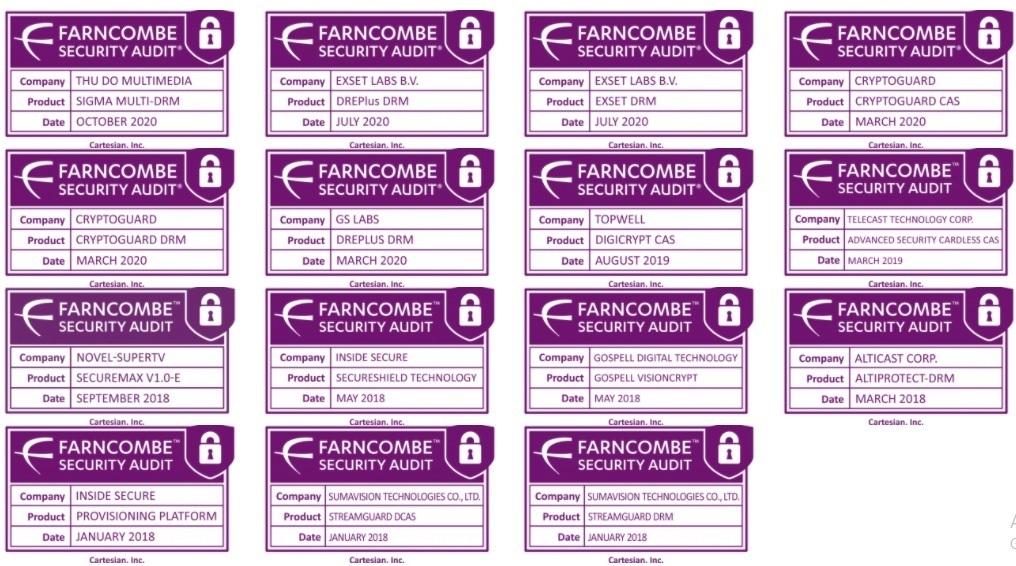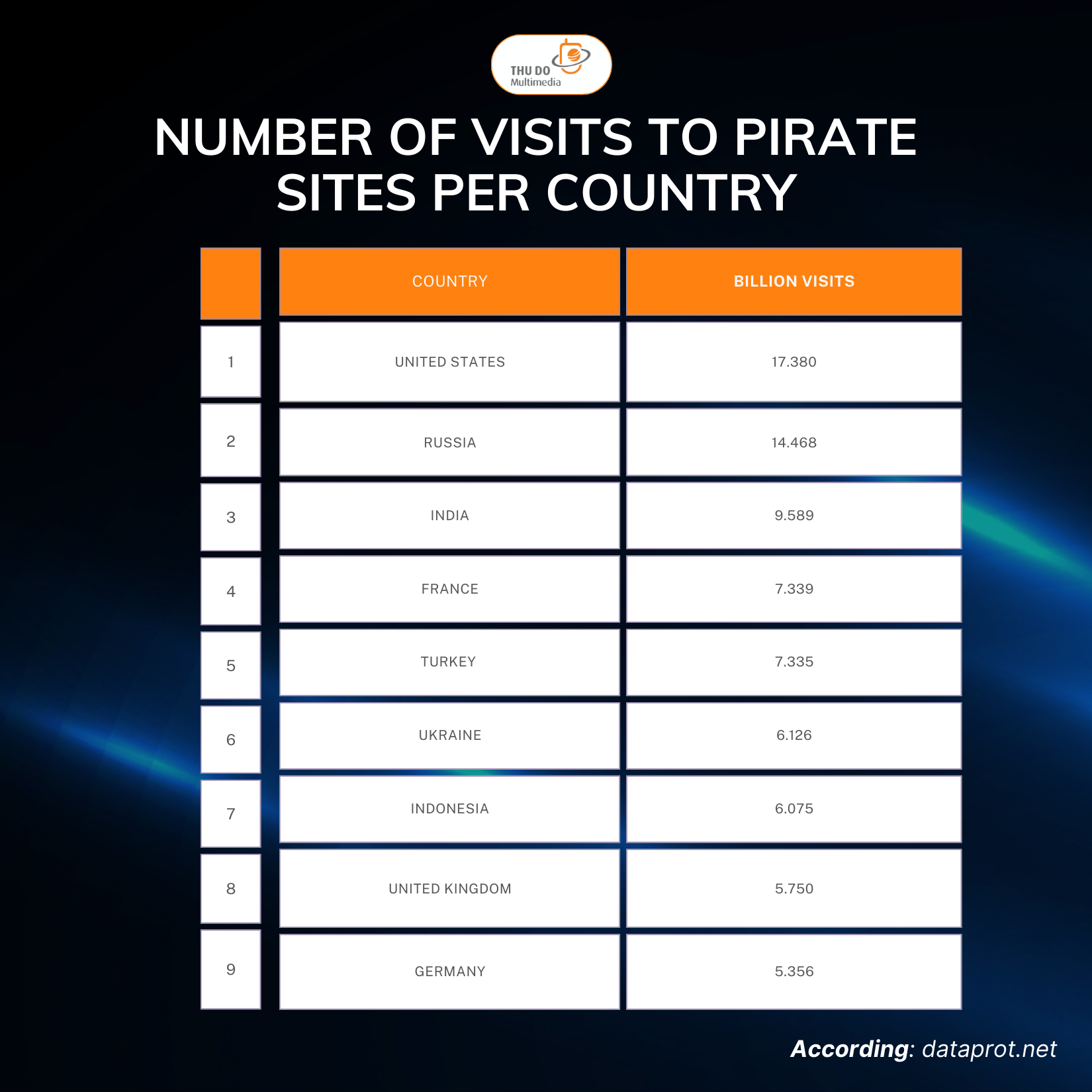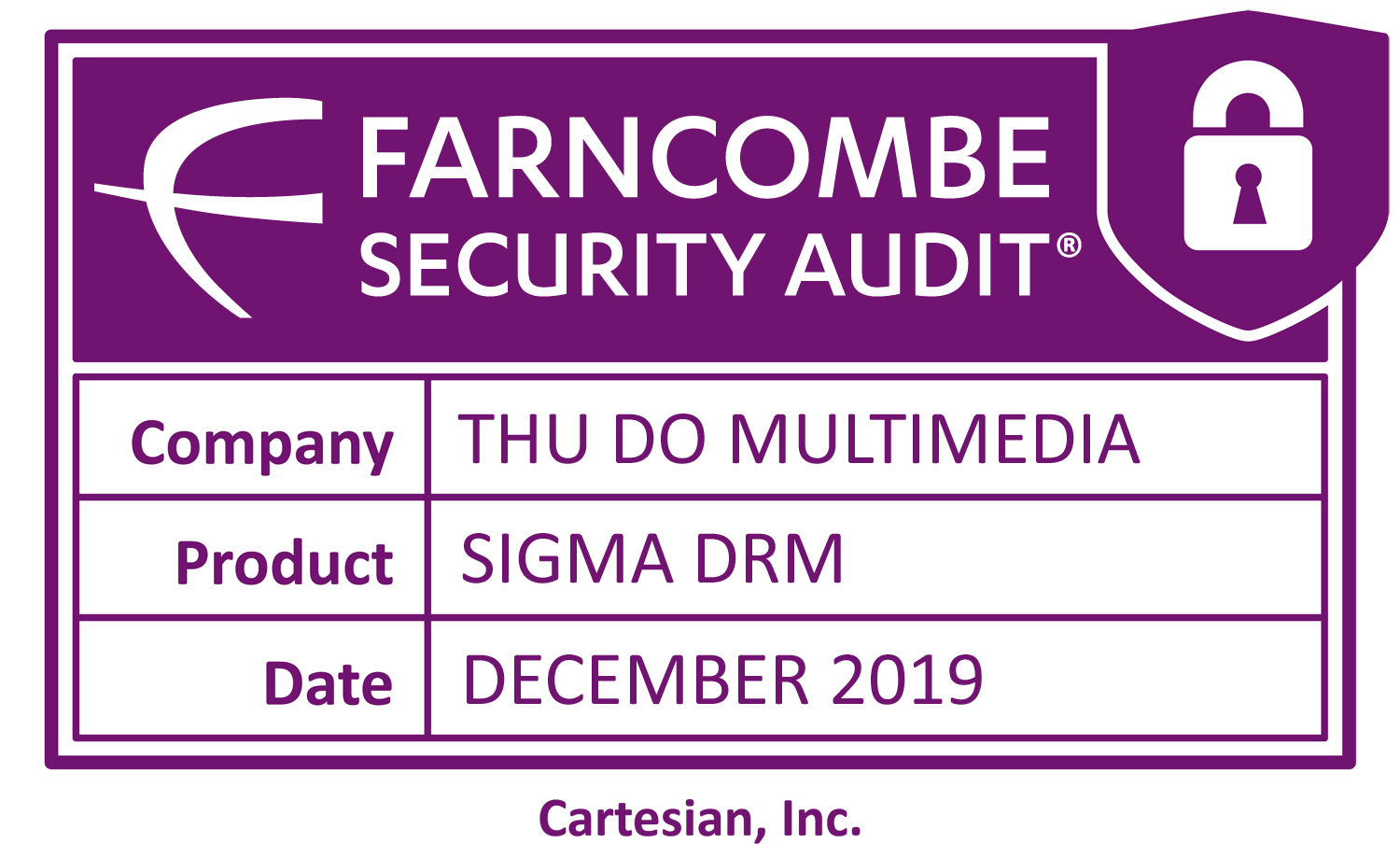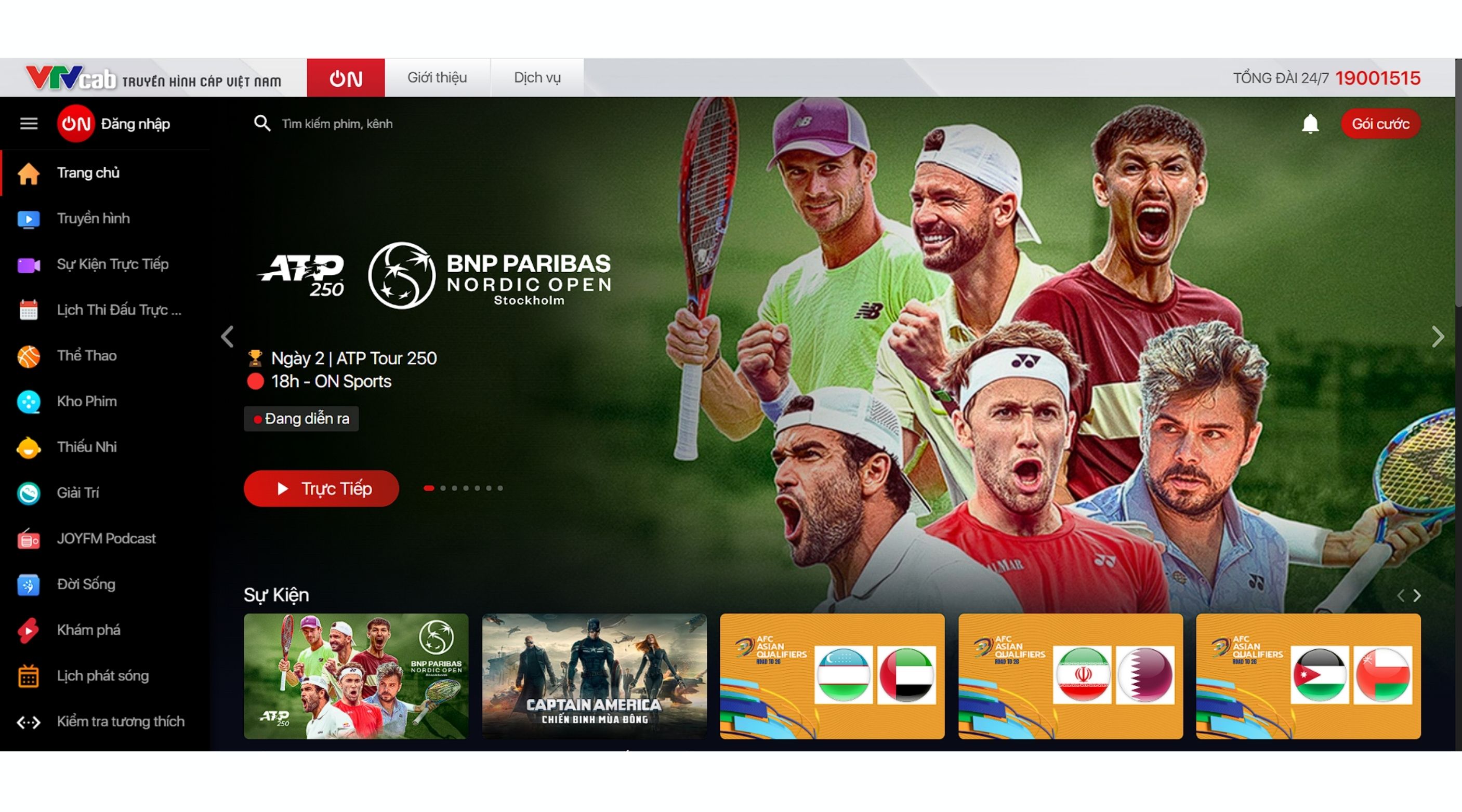
How Sigma Media Server enhances video streaming performance
If businesses and television organizations are looking for a solution that ensures a stable, high-quality Video streaming experience for the audience. Sigma Media Server from Thu Do Multimedia is the choice not to be missed. This is the optimal solution to enhance the power of content transmission, bringing a smoother and more vivid broadcasting experience than ever. Let’s explore the details in this article!
Overview of Video Streaming

Video streaming is a technology that allows users to watch online videos without having to download the entire content first. Instead, the video data is continuously transmitted from the server to the user’s device over the Internet. This technology has become an important part of modern digital content consumption.
When a user starts watching a video, the data is downloaded in small pieces (called packets) and played immediately. This reduces waiting time and viewer experience.
Types of Video Streaming
- On-demand Streaming: Users can choose content to watch at any time, such as Netflix or YouTube.
- Live Streaming: Content that is broadcast live, such as sporting events or TV shows.
- Game Streaming: Players can participate in online games without having to download the entire game data.
To stream video, you need:
- Internet connection: Minimum speed of about 2 Mbps for SD quality video and 5 to 9 Mbps for HD or 4K13.
- Streaming device: Computer, smartphone or streaming device like Chromecast.
- Streaming protocol: Use protocols like RTMP, HLS or MPEG-DASH to ensure data is transmitted efficiently and continuously.
Video Streaming: Great Opportunities and Not Small Challenges

Entertainment has always been a prominent and strongly developing industry in all countries, whether it is officially producing movies or buying copyrights. Entertainment videos are always products that are widely accepted by users. In the digital age, video streaming is being utilized, improved and developed more strongly than ever.
The online video platform market is predicted to grow at a CAGR of 13.23%, from 848.78 million USD to 1,804.16 million USD in the next 5 years, showing the increasing demand for this service.
E-commerce livestream:
The trend of livestreaming is becoming an important tool in marketing and sales, allowing consumers to shop directly during broadcasts. This not only creates a seamless shopping experience but also enhances the interaction between sellers and customers.
The popularity of smartphones:
The increasing use of smartphones has promoted the ability to watch live videos anytime, anywhere. This makes streaming more convenient and accessible to a wider audience.
The need for rich content:
Modern consumers tend to prioritize watching videos over reading text content. According to statistics, 4/5 users prefer watching videos over other forms of content. This shows that video streaming is not only a trend but also an essential part of the way content is consumed today.
Facing challenges in Video Streaming technology
In the entertainment industry, providing a smooth and enjoyable experience to users is a big goal but comes with many small challenges. With the increase in the demand for watching videos, streaming platforms face the challenge of improving the quality of their products and services.
In the journey to bring optimal and superior experiences to customers, businesses encounter many difficulties and concerns:
Loading speed and latency in content transmission
One of the biggest challenges in video streaming is ensuring fast loading speed and low latency, especially when users are in different geographical locations. High latency and slow loading speed can lead to stuttering, lag, or long loading times, making viewers easily skip or disconnect.
Watching the same football match, but the neighbor’s house “cheers at the unexpected tweed shot into the net” while your house is waiting anxiously without understanding what happened. Those are two different experiences of latency, one side is low latency and the other side is high latency. Don’t let customers always be “behind” when enjoying their favorite programs. This way, broadcasters are likely to lose revenue.
How to insert ads effectively

Many video streaming platforms integrate ads to generate revenue, however, inserting ads in a non-smooth manner makes it easy for viewers to skip out. That makes businesses not have much advertising revenue on their products.
Today, the trend of inserting ads has completely changed, no longer manual as before. Customers can hardly skip ads when watching videos but need to watch the full ad. This is a new technology that many businesses have not updated.
Live streaming quality
With live streaming events, maintaining high and stable quality is extremely necessary. Transmission problems or poor image quality during live streaming can lose the authenticity and appeal of the event, leaving a bad impression on the audience. This is a big challenge for sports events, music, or online seminars.
Many event organizers experience live streaming crashes while streaming among thousands or millions of viewers. Especially for game show live streams, when a large number of fans access the live system, the system is overloaded and the live crashes. That is an incident, but mainly a challenge that businesses need to anticipate. To have a solution for the next live.
When the business has completed the product, transmitting the video to viewers is even more important. Because this is the final stage in the revenue journey. Businesses need to find a comprehensive strategic partner to have the best solution in transmitting video streaming.
Key solutions to optimize video streaming performance
When talking about the challenges in video streaming technology, there are many problems that Thu Do Multimedia can solve with its solutions.
Sigma CDN solution
Optimize the speed of content delivery through a powerful content delivery network. Helps minimize latency and ensures stable loading speed even when the number of visitors increases. This is extremely important in retaining viewers and improving satisfaction.
There are many CDN distributors in the world, but Thu Do Multimedia uses modern technology. Allows easy detection and automatic and extremely fast conversion of CDN sources. Makes the video smooth every millimeter.
SSAI solution (Server-Side Ad Insertion)

Seamless ad insertion technology is a breakthrough, when viewers need to wait for the end of the ad to be able to continue watching. It is not easy to skip ads like before.
The technology we use turns the ad into a movie video format. Even if you use full ad skipping software, you cannot detect and skip it immediately.
With that technology, businesses can increase the time customers pay attention to the ad and keep customers on their channel longer. Helps increase advertising revenue for businesses.
On today’s Youtube channels, inserting ads continuously becomes popular. Viewers are also more willing to accept ads than before.
Media Live solution
Supports live streaming with low latency and ensures stable quality. This is essential for large events such as sports, concerts, or online seminars, helping to provide a smooth and vivid experience for viewers.
When applying Media Live, organizers can broadcast live with high quality without blocking the connection. Viewers can watch the performance with sharp images without having to wait for loading or experiencing lag.
Businesses can easily handle Live in real time, control the entire Live process and allow their own playback.
Media Video Solution
Thu Do Multimedia processes and optimizes video capacity, helping to balance image quality and bandwidth usage. This is very important for service providers who want to reduce data load but still maintain the best experience.
When videos are optimized in terms of capacity, streaming platforms can reduce the data traffic required for each viewer. This saves network resources and helps serve a large number of users at the same time without causing bandwidth congestion.
Imagine the capacity of a 2-hour movie with full HD resolution can weigh up to 4GB. When using Media Video, the movie capacity can be reduced to 1.5 – 2GB without significantly reducing image quality. This helps save significant resources for the storage space of the business.
Sigma LRM Solution
Sigma LRM (Linear Right Management) allows broadcast service providers to easily and effectively manage channel content. Thereby helping to create a seamless and professional viewing experience for the audience.
In addition, it helps to organize broadcast schedules easily, quickly and conveniently by inserting live signals. It is possible to insert, delete or rearrange broadcast schedules on each channel.
Above are some effective solutions from Thu Do Multimedia to handle the difficulties that Video Streaming broadcasting businesses often encounter. It helps businesses “break” fierce challenges and return to the rating race more smoothly.
Sigma Media Server: An All-in-One Platform for Optimizing Video Streaming
What is Sigma Media Server?
Sigma Media Server is a comprehensive integrated platform that provides optimal solutions for video streaming. From content distribution, advertising management, to live streaming and video-on-demand distribution.
Designed to support the diverse needs of the broadcasting industry. Sigma Media Server helps service providers improve performance and manage video content effectively, providing users with the smoothest and highest quality experience.
Businesses do not need to spend time searching for each solution for their content. Here, we have a full range of effective, all-in-one solutions for businesses to choose from. Summary of Thu Do Multimedia’s solutions such as Sigma CDN, SSAI, LRM, Media Video, Media Live,..
The task of businesses is to choose the solutions that suit their needs on our Sigma Media Server platform.
Sigma Media Server Comprehensive Solution Distribution

Sigma Media Server solution is currently available on two leading e-commerce platforms in the technology field: Huawei and Alibaba. Distribution on these two prestigious platforms allows businesses to easily access and experience Sigma Media Server, while ensuring outstanding performance and reliability.

With the extensive server system of Huawei Cloud and Alibaba Cloud, Sigma Media Server takes full advantage of the powerful storage infrastructure and stable bandwidth. Providing the ability to distribute and store video content for businesses on a global scale, optimizing the user experience to the maximum.
Learn now: Sigma Media Server solution on Huawei platform
Sigma Media Server solution on Alibaba platform
Free Sigma Media Server experience
Do businesses want to experience our Sigma Media solution right away? Thu Do Multimedia provides a free experience of the Livestream feature for the internal network on the platform.
The livestream system is free but brings a comprehensive experience with breakthrough advantages. Businesses can:
- Livestream directly on the platform and share the livestream link to their favorite users
- Integrate professional tools and effects from various sources to enhance the quality of content before broadcasting.
- Livestream from pre-edited videos
- Livestream on multiple platforms at the same time such as Facebook, Youtube, …
- Support expanding e-commerce presence, increasing sales
There are countless outstanding and extremely useful features to experience Livestream directly on Sigma Media Server. Experience it right here!
Conclusion:
Thu Do Multimedia’s Sigma Media Server solution helps improve online video streaming performance for businesses and television organizations. Bringing a smoother, more vivid and faster broadcasting experience than ever before. Now, businesses can easily access and deploy Sigma Media directly on leading e-commerce platforms such as Huawei and Alibaba.
Deploy Sigma Media Server today to optimize streaming performance and connect more strongly with your audience!



























Recent Comments